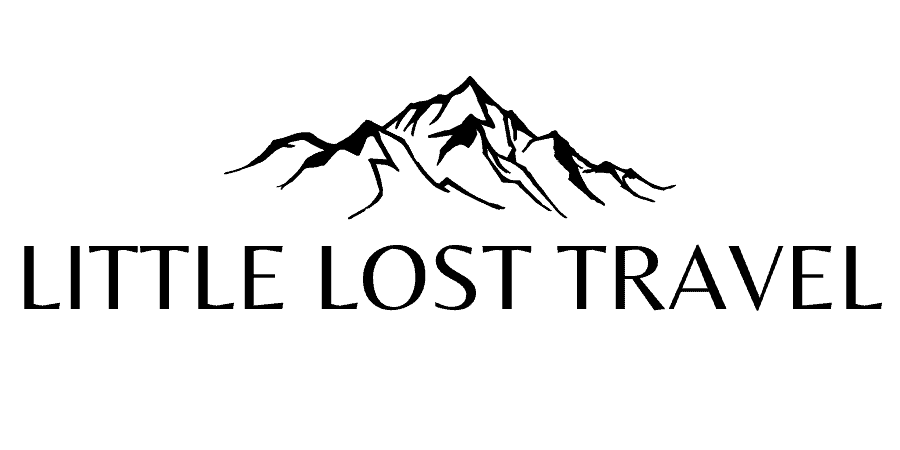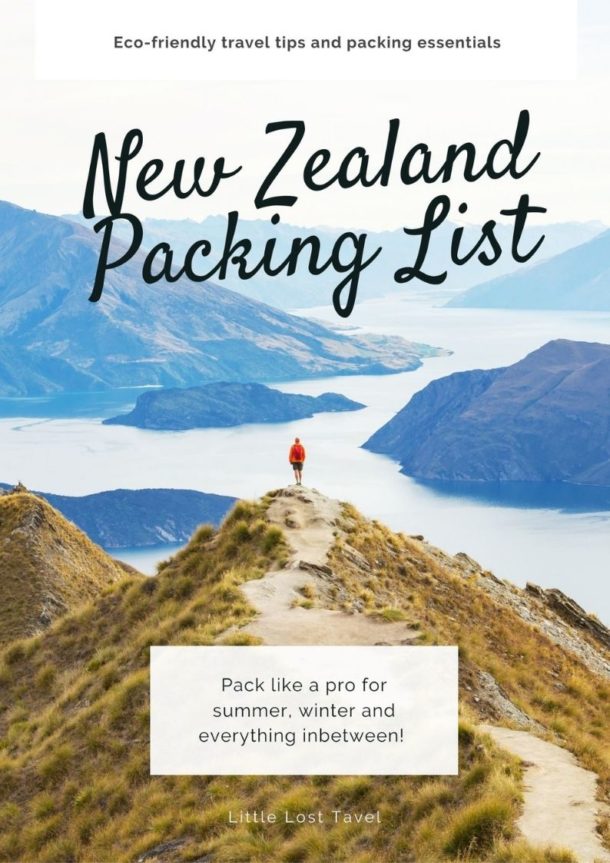Planning a trip to New Zealand? In this article, I will share my top tips for what to wear in New Zealand whether you’re travelling in winter, summer or the shoulder seasons.
It’s an eco-friendly packing list too so you can be a more sustainable traveller in this beautiful country.
You can experience all types of weather in one day whatever the season in New Zealand. So, what do you wear?
So with that in mind, this New Zealand packing list covers both winter, summer and everything in between.
This packing list is for anyone who loves adventure and the outdoors (so I’ve included some outdoor gear here too). Simply remove anything that’s not relevant to you and you’re good to go.
New Zealand packing tips: Weather and climate

New Zealand’s climate changes depending on where you go. The North Island is known for its subtropical forest climate whereas the South Island is more alpine.
In winter around the country, you can experience snow, ice, rain and glorious sunny days. Summer tends to be much hotter and shoulder seasons can be the pick of the entire bag!
The reality is you can experience all four seasons in a single day so you need to be prepared. I travelled to New Zealand in winter and only wore jeans and a long-sleeved top some days. That’s coming from someone who is always cold!
My secret weapon is layers. Bring enough versatile and breathable clothing you can layer up and peel off when you need to.
Plan your New Zealand itinerary for the North Island and South Island!
General packing essentials for New Zealand
Below are some key items you’ll need for your trip to New Zealand.
- Passport of course!
- Visa – make sure you check all entry requirements. You may need to get a visa or request an Electronic Travel Authority depending on your nationality.
- Driver’s license – make sure it’s valid in New Zealand if you plan to drive. International driver’s licenses aren’t recognised as proof of ID in bars but passports are as risky as it is!
- eSIM card – it’s super easy to download an eSIM with a prepaid data package with Airalo.
- Credit/debit card – I use Monzo as you can track your spending in real-time, pay in the currency and there are no fees unless you take out over £200 in cash.
Editor’s tip: Now more than ever it’s vital to travel with insurance! This is my favourite travel insurance provider.
Clothes to pack for New Zealand
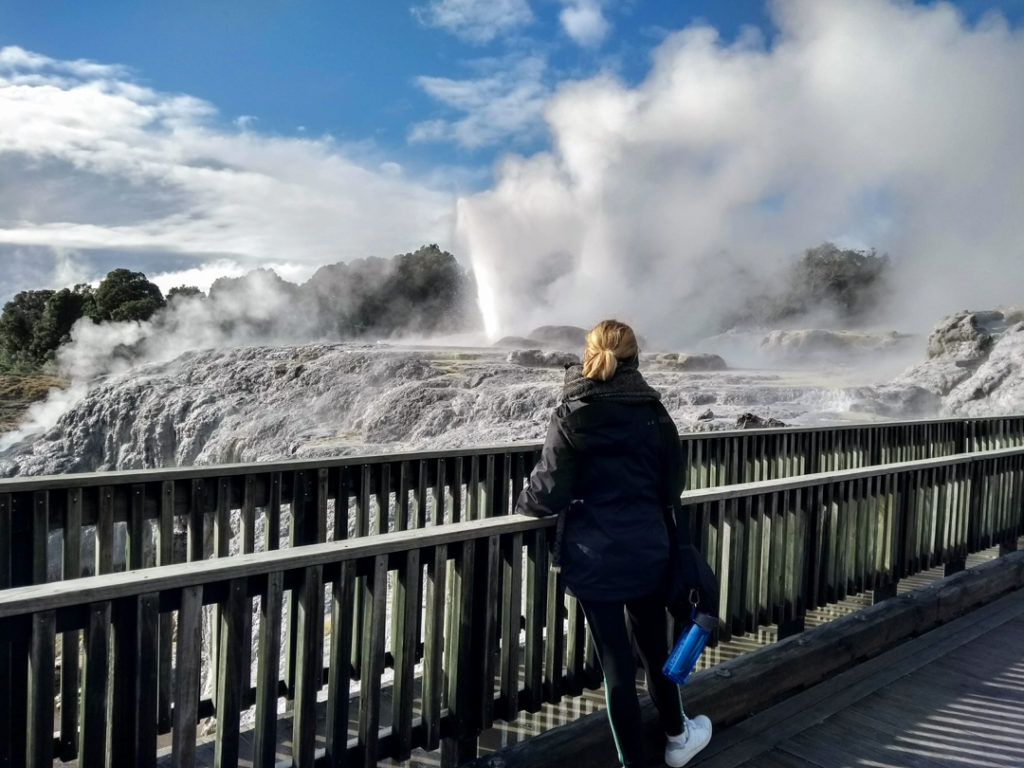
Here’s an overview of the clothes to take whatever the season. I’ve also included some season-specific essentials further down.
Since you can experience all seasons in one day in New Zealand, it’s a good idea to bring items you can layer up or down. Take clothes that can last several wears without washing and won’t easily crease.
Build a capsule wardrobe so every item can be mixed and matched to create different outfits.
Tops
- 3 long-sleeved tops – made from bamboo if possible as they’re breathable and moisture-wicking. Plus it’s a sustainable material!
- 3 t-shirts
- 2-3 lightweight jumpers
- Water and wind-proof jacket – I love these one from Rapanui. They’re eco-friendly and warm!
- Nice dress or skirt for pretty photos or when you’re going somewhere smart or for photos at Hobbiton!
- Pyjamas
Bottoms
- 1 pair of jeans – for when you’re casually sightseeing.
- 2-3 pairs of leggings – so you can be comfy on the go and handy as layers. Go for bamboo again here.
- 1 pair of trousers – comfier than jeans but smarter than leggings.
Smalls
- Enough underwear for the trip.
- Sports bra
- 2-3 bras
- Enough socks for the trip.
Footwear
- Trainers / shoes you feel comfortable wearing all day. Tropicfeel’s sneakers are designed to take you from urban settings to the outdoors. They’re waterproof, comfy and sturdy.
- Smarter shoes for when you want to dress up a bit.
- Flip flops – not just for summer. You’re going to want them if you’re staying in accommodation with shared bathrooms. It’s just more hygienic.
Essential toiletries
An easy way to be sustainable and practical in your packing list is with the toiletries you take.
If you’re going carry-on only, you know you’ll need to limit liquids – so why not take solid toiletries like shampoo bars instead?
Other ways include cutting out plastic wherever possible and putting your money on brands that are considerate of their impact.
- Bamboo toothbrush – banish as much plastic from your wash bag as you can!
- Bamboo toothbrush case – to keep your toothbrush clean.
- Toothpaste or toothpaste tabs
- Reusable travel-safe razor – note, blades need to be stored in your checked luggage.
- Shaving soap
- Shampoo bar – Ethique is my go-to and I don’t have to use conditioner with it.
- Conditioner bar
- Cleanser bar
- Soap tins – to keep all your toiletry bars clean and safe!
- Moisturiser
- Natural deodorant – Wild is my favourite eco-friendly deodorant I’ve tried. It’s safe, non-toxic and comes in amazing scents. It lasts so long too!
- Reef-safe sunscreen – no matter what the season in New Zealand, it’s always good to have a sunscreen base layer. I use this organic sunscreen as it’s great for sensitive skin.
- Reusable containers – for your liquids.
- Use reusable facecloths rather than wipes.
- Your fave makeup if you wish.
- Insect repellent – you can also use natural deterrents like citronella.
- First aid kit – it’s always good to be prepared. I also include painkillers, blister plasters and anti-motion sickness tablets (this may come in handy if you go whale watching on a boat!).
- Hairbrush
- Lightweight microfibre towel
Eco-friendly travel essentials

These essentials below make your packing list a little bit more eco-friendly. Many of these items come from Jungle Culture, a go-to for handy plastic-free essentials.
- Tupperware or a stainless steel lunchbox – handy for leftovers and meals on the go. Try to limit food waste as much as possible.
- Reusable wooden cutlery set – this one comes with a bamboo straw, and cleaner and is kept safe in a handmade organic cotton pouch.
- Reusable water filter bottle – never buy a plastic water bottle again when you’re guaranteed safe drinking water wherever you go. I have a whole guide on the best water filter bottles.
- Tote bags – always useful and much better than plastic bags!
- Menstrual cup – a more zero-waste option and you don’t have to stuff every crevice of your bag with pads etc.
- WUKA period underwear – if you don’t quite get on with cups, these are also a great option. Super comfy too! Not sure how they work for travel? Read my WUKA review.
- Coffee drinker? Take this reusable coffee cup with you so you can get your caffeine fix sustainably on the go.
- Hand sanitiser is an important travel essential these days.
- Guppyfriend bag – these are great for washing your clothes as they prevent microplastics from getting into the water.
Editor’s tip: My favourite water filter bottle is from Water-to-Go. It filters out chemicals, bacteria, viruses, heavy metals and more from any freshwater source. Get 15% off any bottle when you use code FB15!
Electronics to pack
Here are some key electronics I recommend taking. You can pick and choose depending on what kind of trip you plan to have. Just remember to pack the chargers!
- Make sure you add a good camera to your list of New Zealand travel essentials as there will be no end of breathtaking scenery to photograph. If you have a phone with a good camera then that will do. If you want to take a camera along, I like the Sony a6000 as it’s a good mid-range one.
- Keep your photography equipment safe with a camera bag.
- GoPro – for any underwater or outdoor action photography.
- Tripod and remote – you may find these useful if you’re travelling solo and don’t want to always rely on other people to take photos of you. You can get ones for your camera and your phone.
- You may want to bring along a drone with you. Always check licence rules and places you can’t fly your drone. Also, be mindful of others when you fly it. There’s nothing worse than having a peaceful place disturbed by a loud buzzing over your head!
- USB cable – just a very handy piece of kit to have.
- Worldwide travel adaptor – always essential.
- Portable charger – it’s always a good idea to keep one as a backup so you’re not stranded with a phone drained of battery.
- Earphones – to give yourself some quiet time on the road.
- Chargers for all the electronics you’re taking!
Items to help you pack
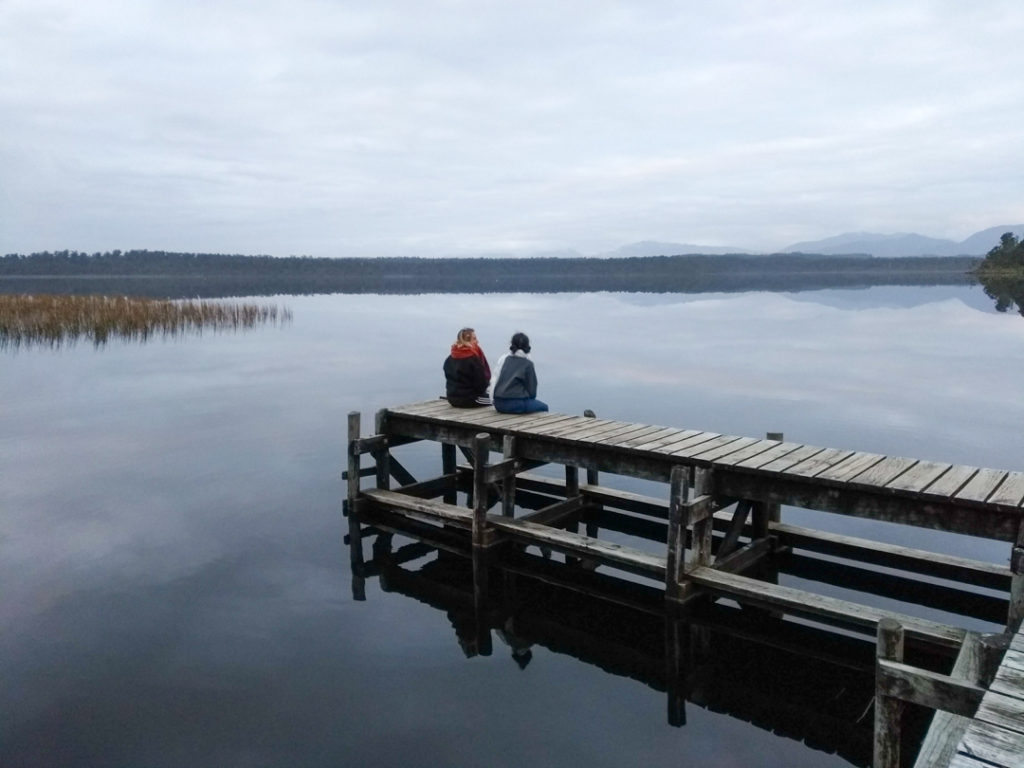
Below are some key items that help you pack and make it easier to travel. I’ve also included some of my go-to security products that help me feel safe on the road.
- Backpack – probably the most important thing on this packing list. Your bag is your trusty travel companion so if you’re in the market for a new one, you’ll want to choose well. I personally love Osprey. This sustainable brand uses durable fabrics and supports environmental projects around the world.
- Daypack – for when you want something light to go exploring with. I like this one as it has RFID protection to keep your bank cards safe and anti-slash straps.
- Packing cubes – forget about help, these are packing lifesavers! Packing cubes keep your bag organised and you can squeeze more in.
- If you’re staying in hostels or want some extra peace of mind, a bag protector may come in handy. You throw the mesh over your bag, lock it to an unmovable post and you’ve got yourself a portable locker!
Editor’s tip: Looking for more eco-friendly travel bag options? I’ve rated the best bags for travel in a comprehensive guide.
Extras to pack
- Sleeping mask – I can never go without mine.
- Earplugs – defence against the dreaded snorers.
- Oversized scarf – this can be lightweight or thick but it adds some extra comfort and warmth while you’re travelling.
- Sunglasses – you’ll need them in summer and winter.
New Zealand winter packing list
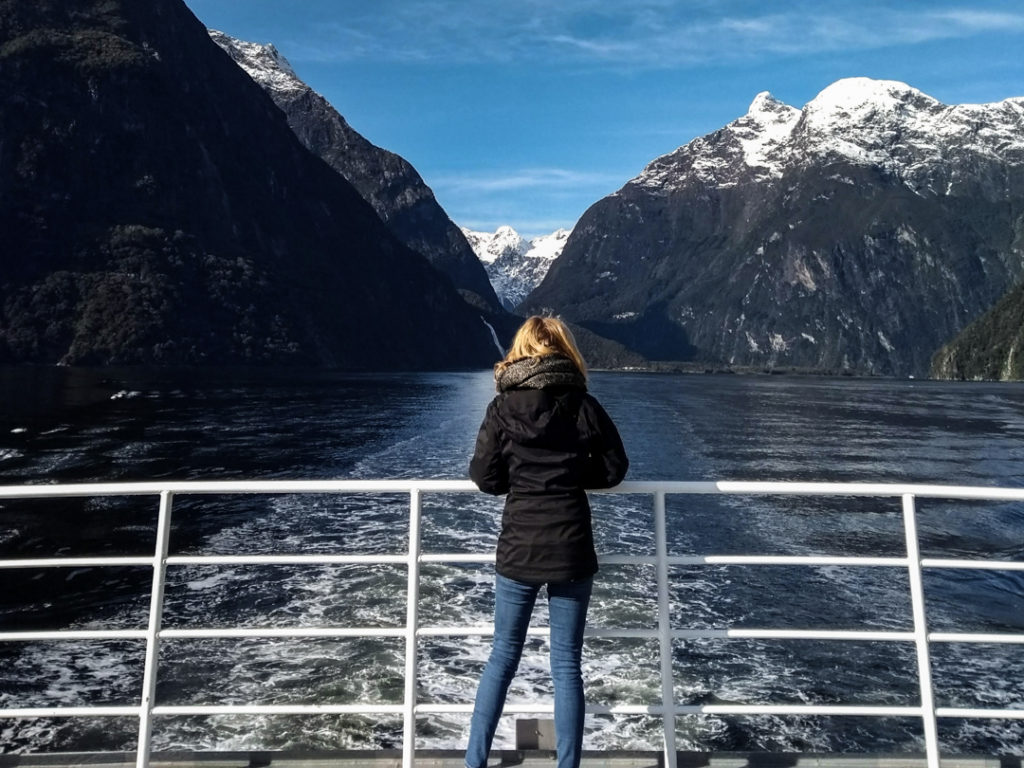
Winter in New Zealand is from June to August. Shoulder months on either side can be cooler too. Temperatures can differ quite a bit between the North and South Islands.
The average temperature in the Northlands at the very top of the North Island is 7C to 16C.
On the South Island, alpine areas can drop to -10C. However, coastal areas are much milder.
Winter is the best time to visit New Zealand if you’re keen to do some snowsports in Queenstown. I recommend renting all the gear when you get there as it’s much cheaper and you won’t have to lug it around.
Again, the key thing to remember for a trip to New Zealand is layers.
- Hat
- Gloves
- Scarf
- Thick socks
- A hoodie – to layer under your jacket and make it warmer!
- 1 or 2 extra lightweight fleece jumpers
- Swimwear – no I haven’t lost it… You’ll want to make the most of all the thermal pools even in winter!
- You may want to consider thermal baselayers – you’re unlikely to need them on the North Island unless you’re camping but it can get cold on the South Island.
New Zealand summer packing list
For summer in New Zealand, you can get away with packing a lot lighter but make sure you bring along a hoodie and rain jacket for when the weather turns.
- Sun hat
- Shorts
- 2-3 extra t-shirts
- 1 extra skirt or dress
- Ethical swimwear – for beach time as well as hot pools.
- Sarong
- Aftersun – for sunburn.
- Hiking or supportive sandals that are a bit more robust than flip-flops.
Editor’s tip: Wondering what to pack for spring and autumn? Stick to the essential clothing list and add layers for when temperatures get cooler or hotter.
New Zealand hiking packing list
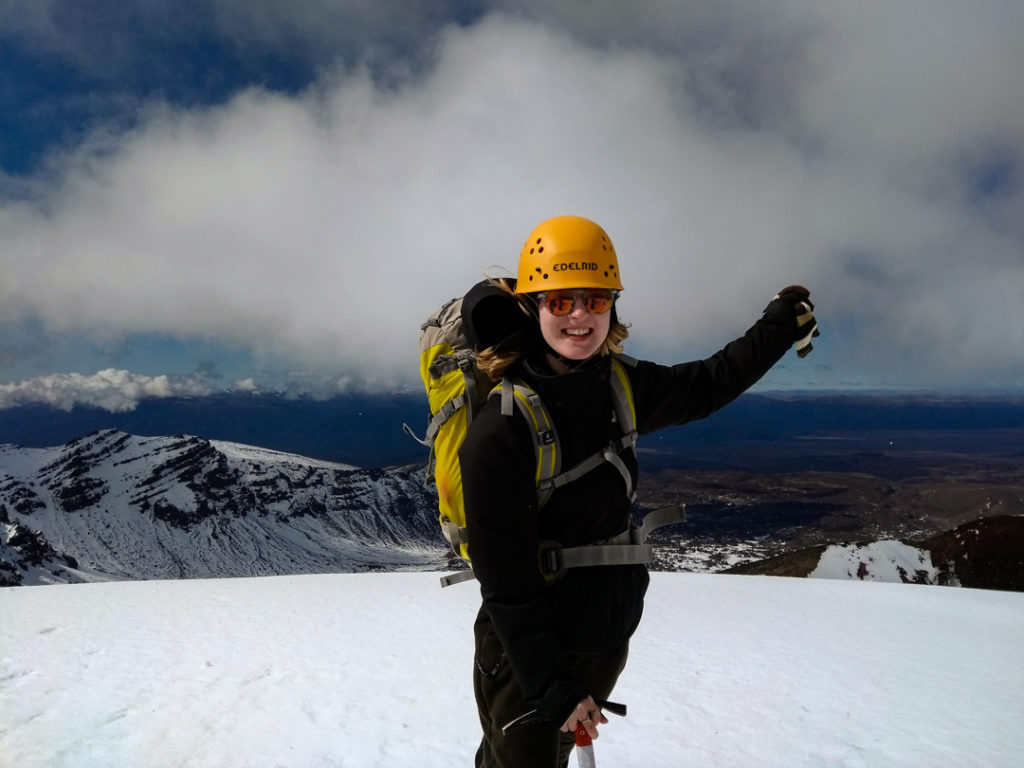
One of the best things to do in New Zealand is hiking. You’re spoiled for breathtaking scenery around every corner.
If hiking, whether casual walks or long-distance treks are on your list of activities, make sure you have the right equipment.
If you’re going on a tour, they will lend you what you need. You can also rent or buy items when you’re there which will save you from carrying excess weight.
- Lightweight hiking trousers
- Lightweight jacket
- Vegan walking boots – I love Will’s Vegan Store. They look great, they’re super comfy and sturdy. Plus, they’re carbon neutral.
- Walking socks
- Optional walking poles – you might find these useful if you’re planning to do some serious hikes.
Editor’s tip: Most outdoor gear with durable water repellency contain perfluorinated chemicals which are toxic and non-biodegradable. They can brush off your gear and contaminate the environment. The best way around this is to buy outdoor gear that doesn’t use them like the ones I’ve highlighted above.
What not to pack for New Zealand
And here’s a quick list of what you don’t need to take with you.
- Mini travel toiletries – they’re an unnecessary amount of single-use plastic and expensive. If you want to pack a carry-on, take solid toiletries instead.
- Hairdryer – depending on where you’re staying, you can usually find a hairdryer you can use, so save yourself the excess weight!
- Wheely suitcase – honestly, you’ll find the wheels annoying when you’re travelling around.
- New Zealand has a strict policy on edible products being brought into the country to protect the environment. Bringing in food like fresh fruit, vegetables or animal products must be declared or you could face a fine.
- Umbrella – you can leave this one behind as you’ll find raincoats far more effective – particularly when you’re out in nature!
- A ton of cash – this is an obvious one but crime is everywhere in the world. Reduce the risk by only taking a small amount of cash each day rather than a wad of notes.
- Heavy books – I LOVE books and always want to take an entire bookshelf with me when travelling, but all that weight is just not practical. Consider a Kindle or do book swaps instead.
- Fancy clothes and high heels – I mean, it depends on what sort of trip you want but generally speaking, if you’re visiting New Zealand you’re going to want to be enjoying the outdoors so heels and dresses aren’t needed. Plus backpacker bars have a super casual dress code!
- Expensive electronics – for the same reason you wouldn’t bring a load of cash. It’s just not worth the risk. I would even suggest leaving your laptop behind unless you’re working remotely. A tablet works just as well if you don’t want to go without it.
- Expensive jewellery – you can leave this at home too.
Packing list for New Zealand final thoughts
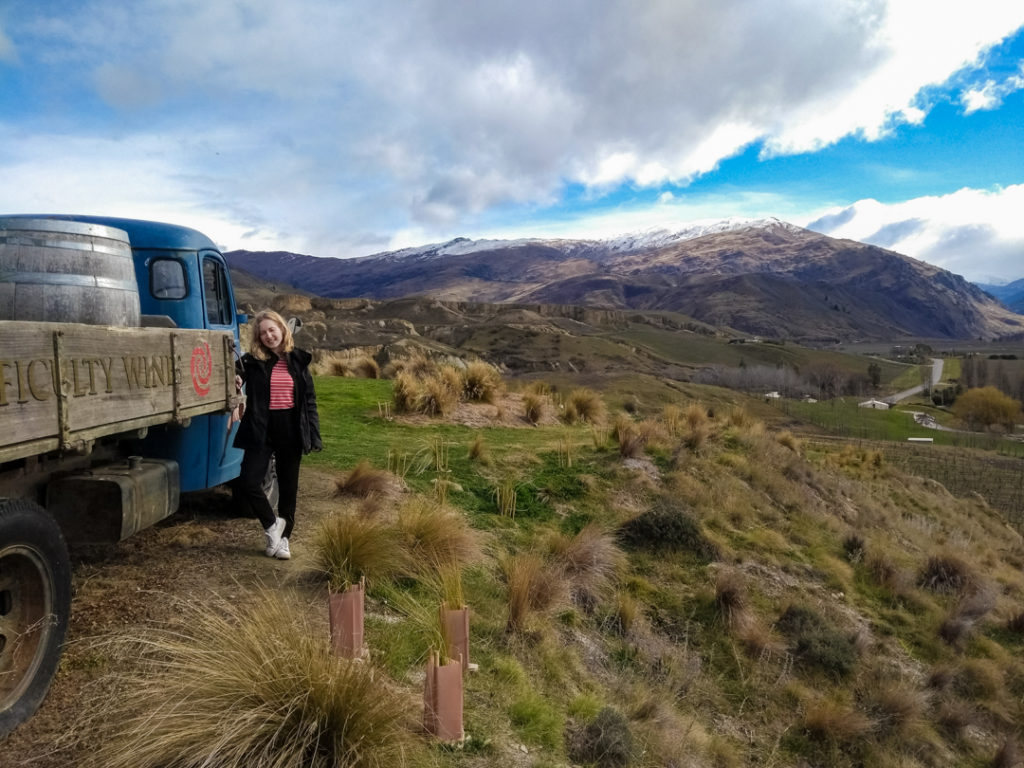
So that’s my New Zealand packing list for both summer and winter!
Whichever time of year you plan to visit, remember to pack layers for the outdoors. Go for breathable, windproof and waterproof. Choose style over comfort and wear a good pair of shoes.
New Zealand is also one of the most environmentally conscious countries in the world so with that in mind, try to do your bit by limiting the amount of plastic you pack, using cotton tote bags instead of plastic ones, reducing food waste and using group transport instead of private.
Do all that and you’ll be just fine!
Have I missed a key travel essential? Let me know in the comments!
Looking for more New Zealand travel tips? These articles can help!
- Everything You Need to Know about Travelling to New Zealand
- Best Places To Stay In New Zealand: Insider Guide To The Top Hotels
- The Ultimate Guide to the Hobbiton Movie Tour in New Zealand
- The Best Place to See Whales in New Zealand
- What It’s Really Like To Travel New Zealand With Kiwi Experience (Review)
Inspired? Pin for later!
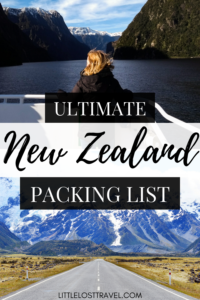
This post may contain affiliate / compensated links. As an Amazon Associate, I also earn from qualifying purchases. For full information, please see my disclaimer here.
